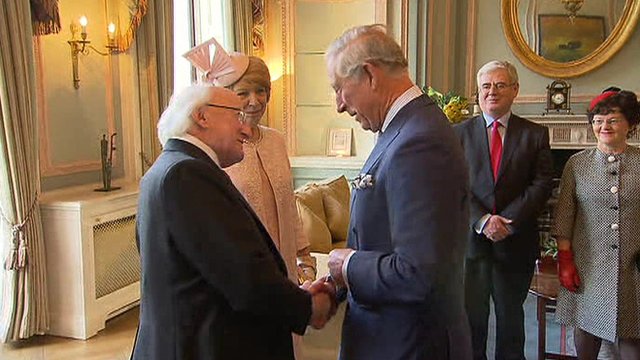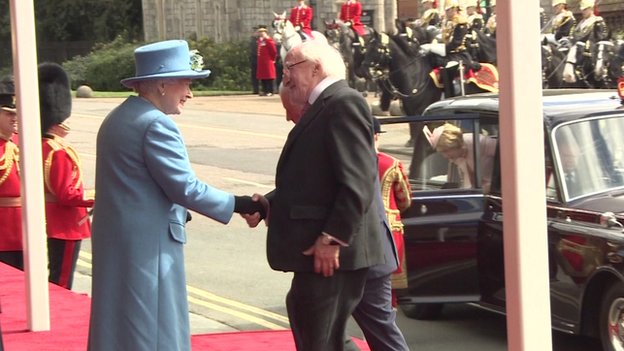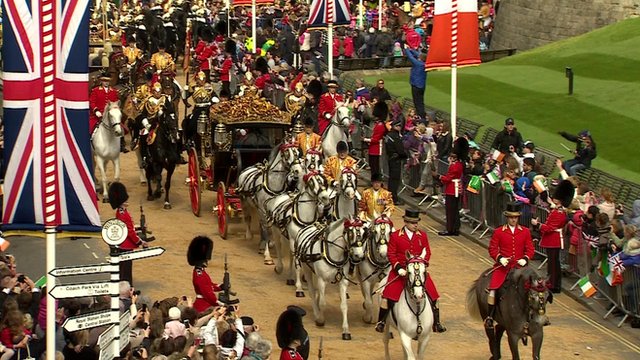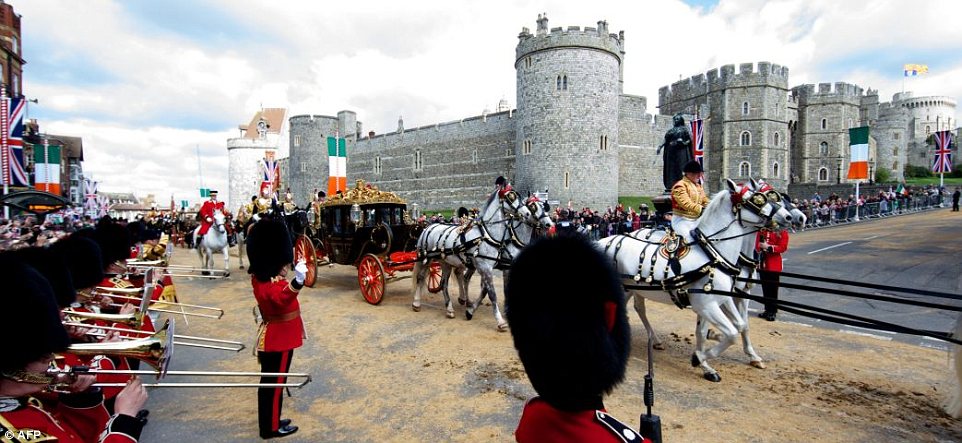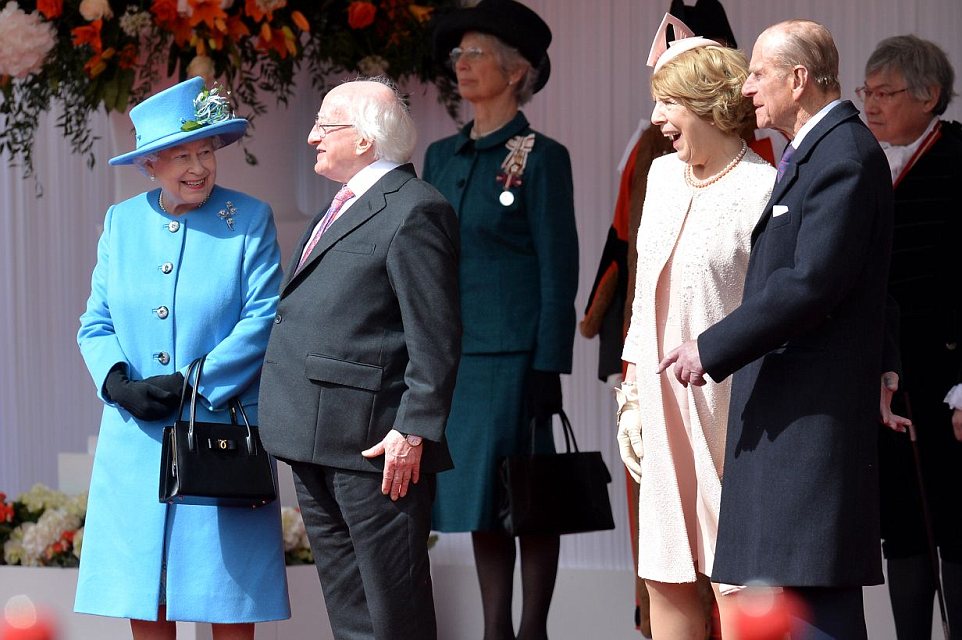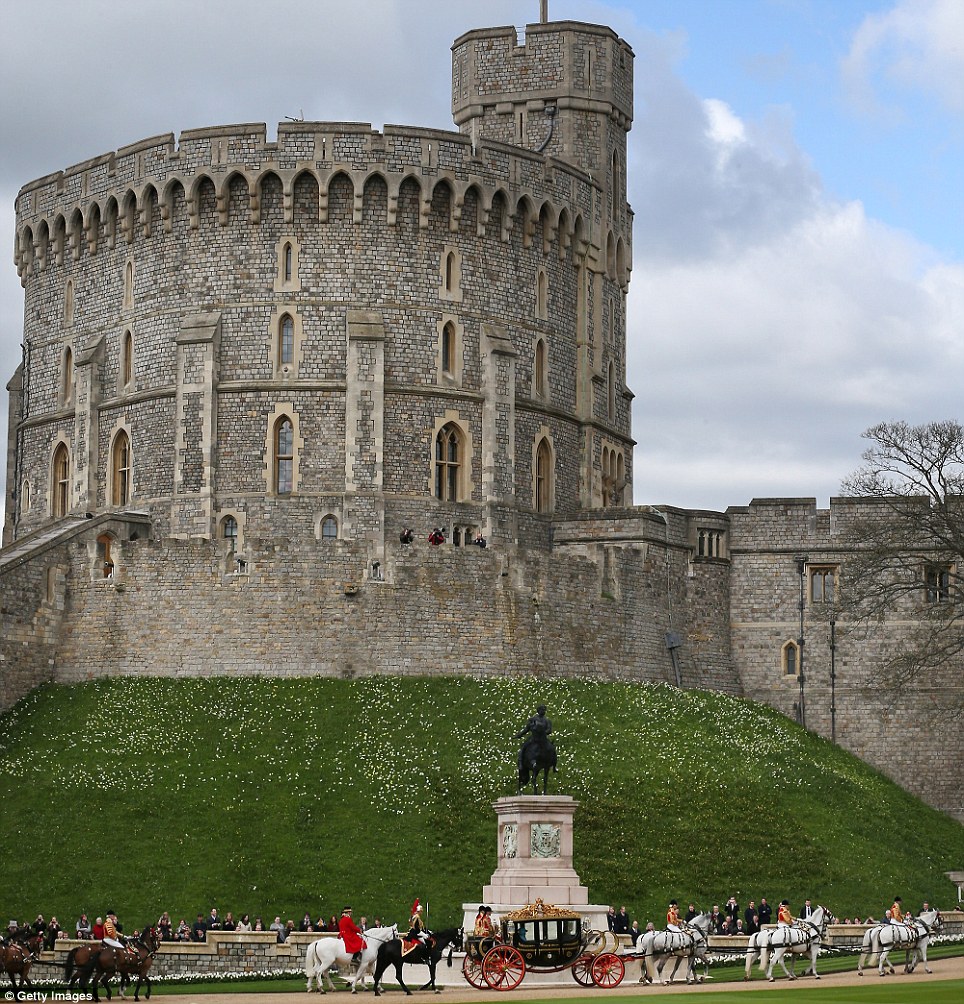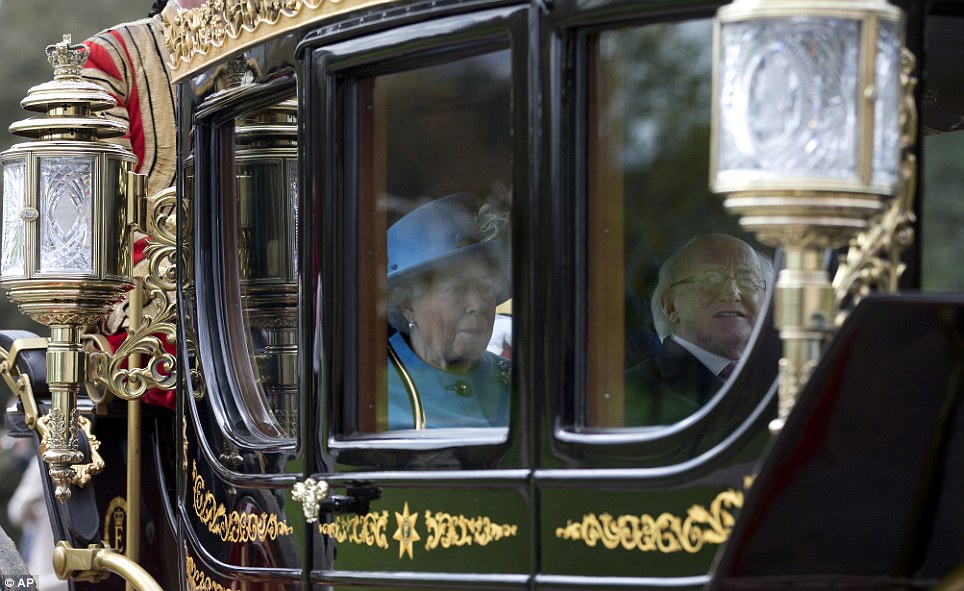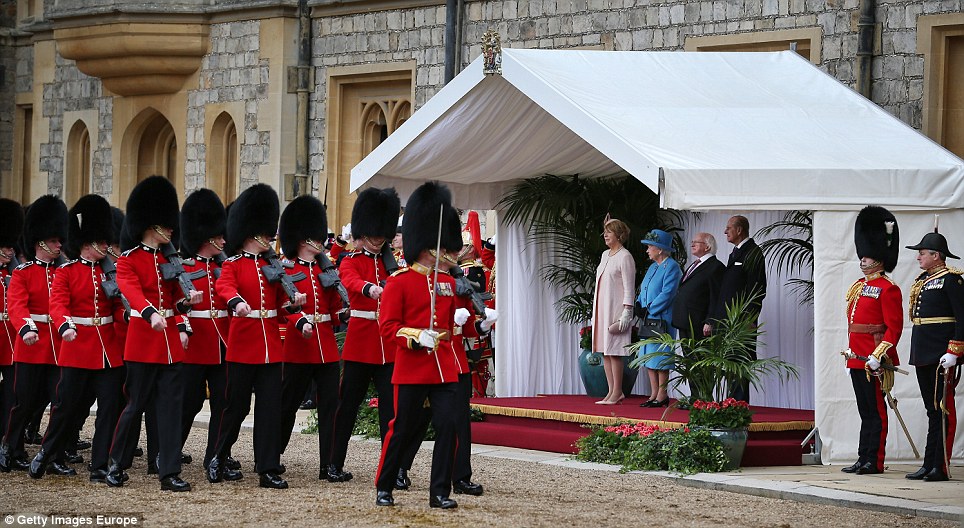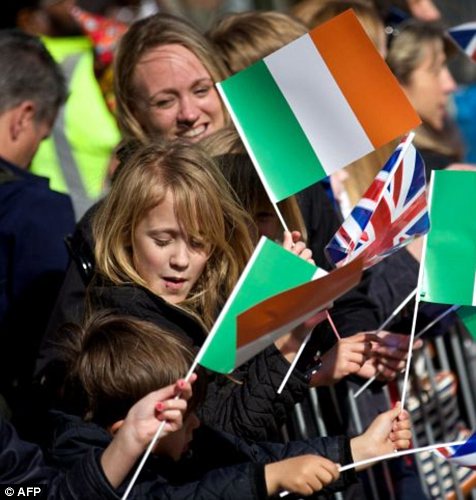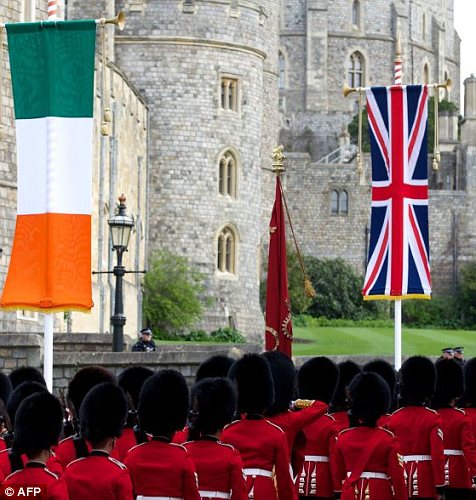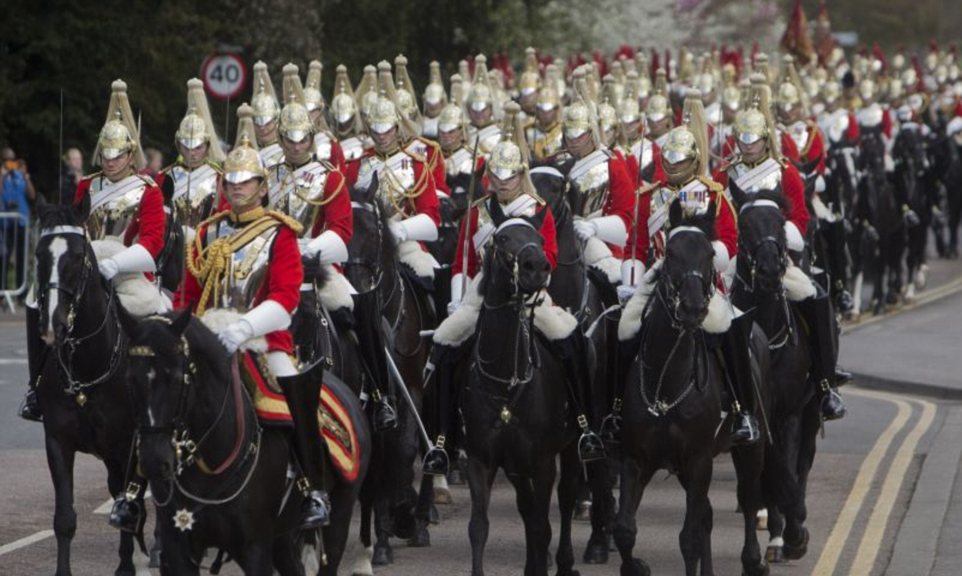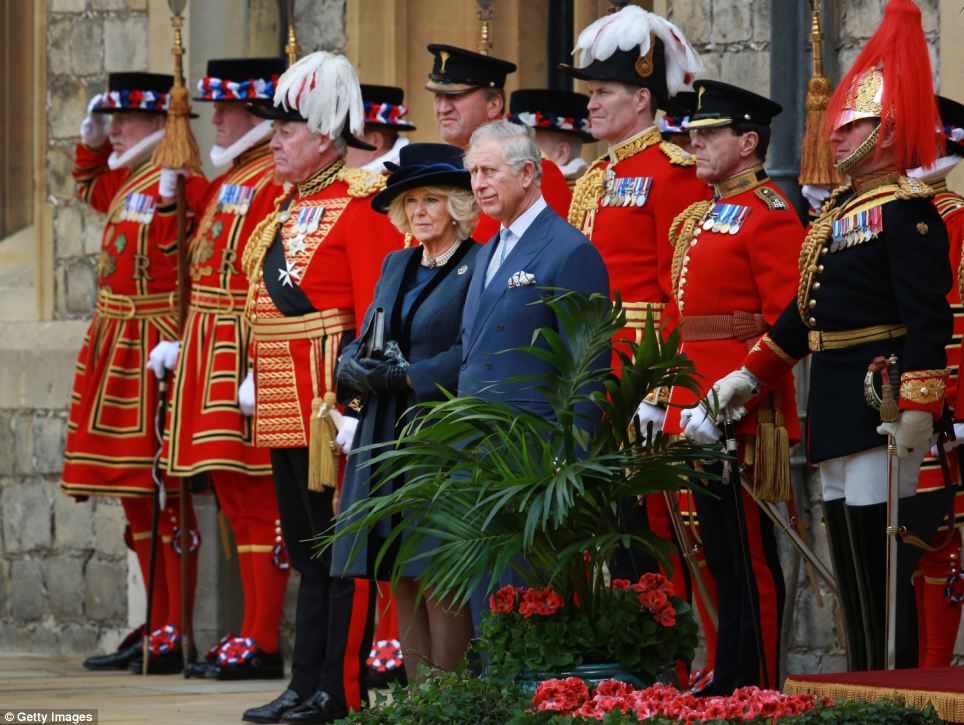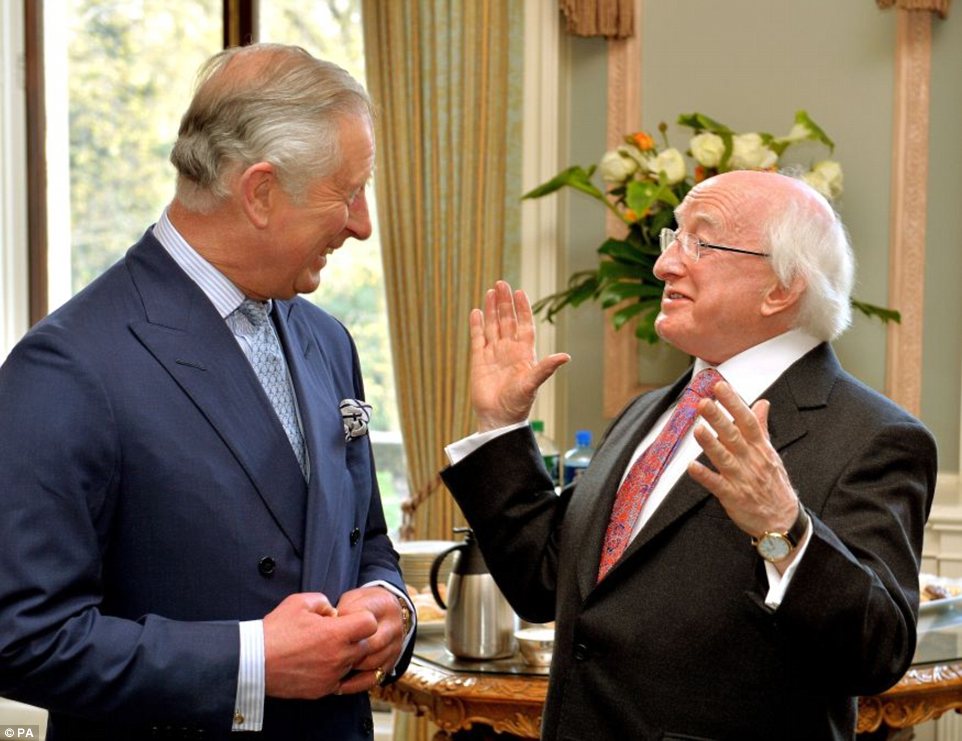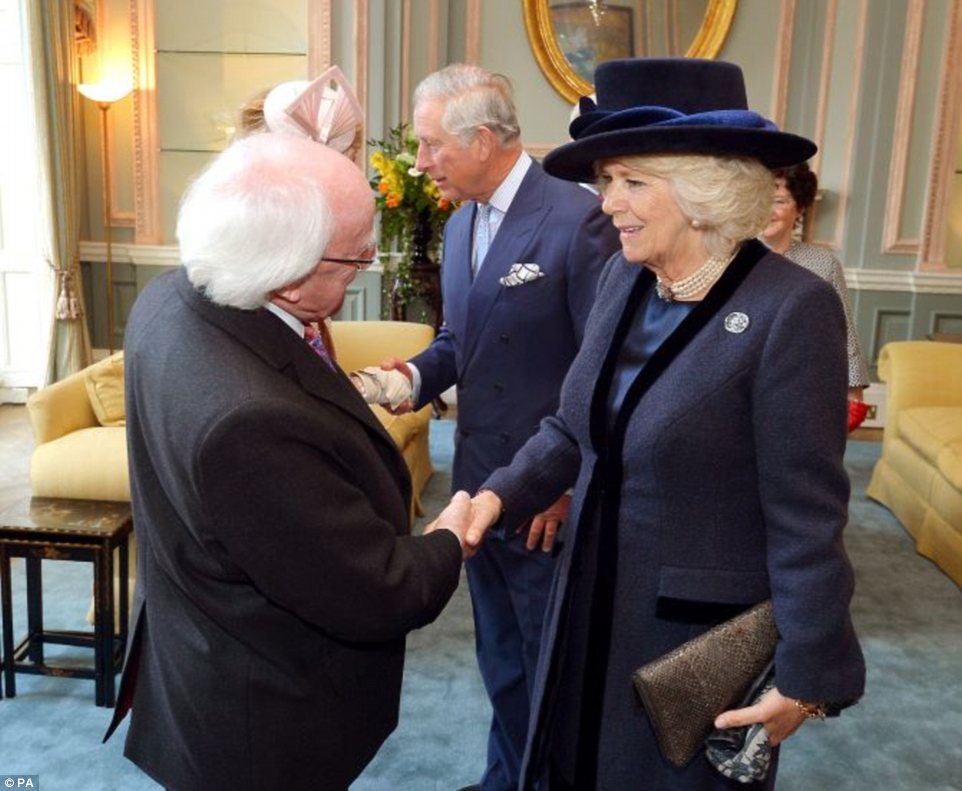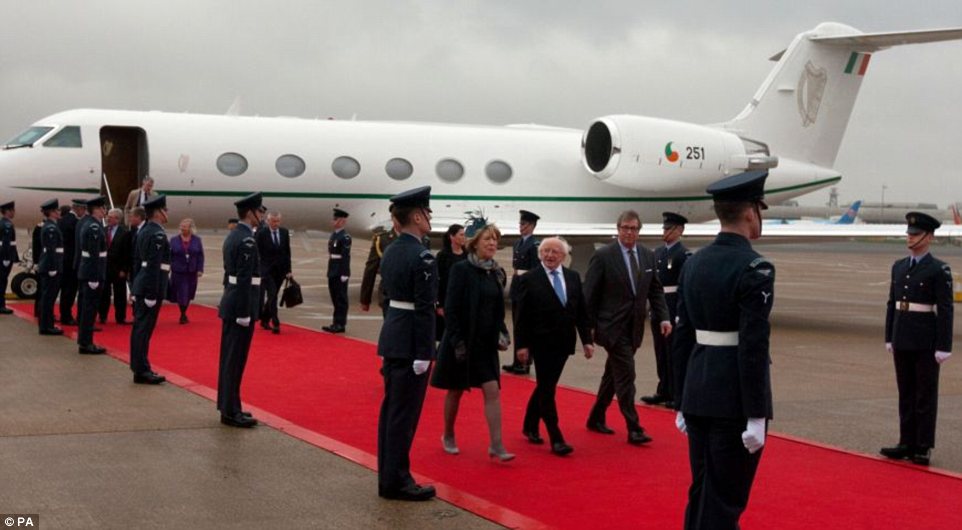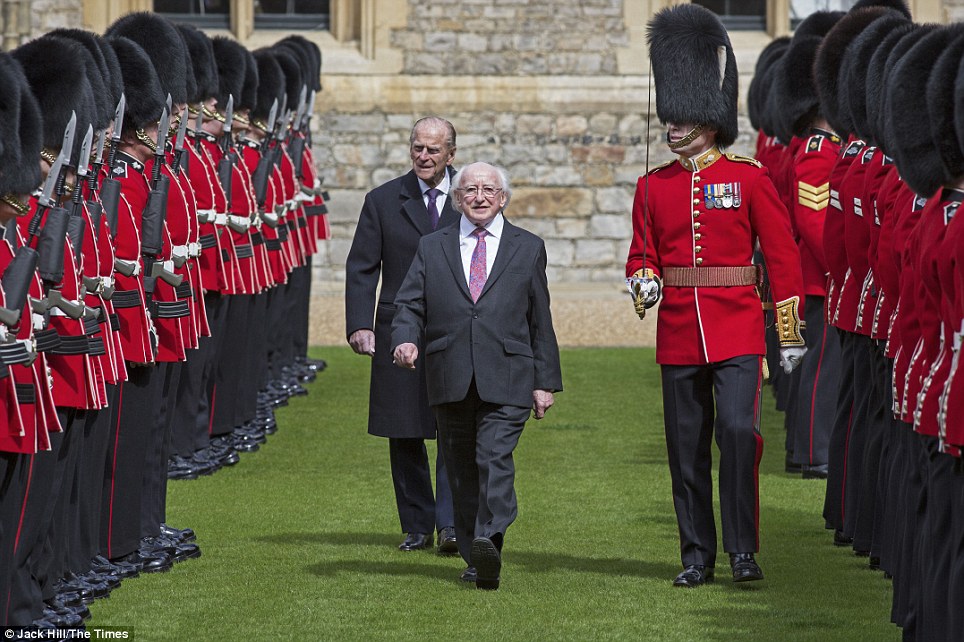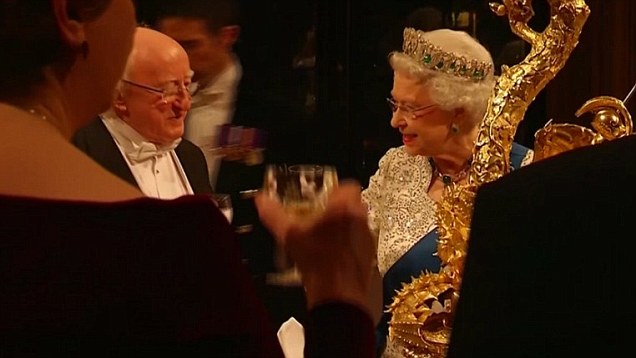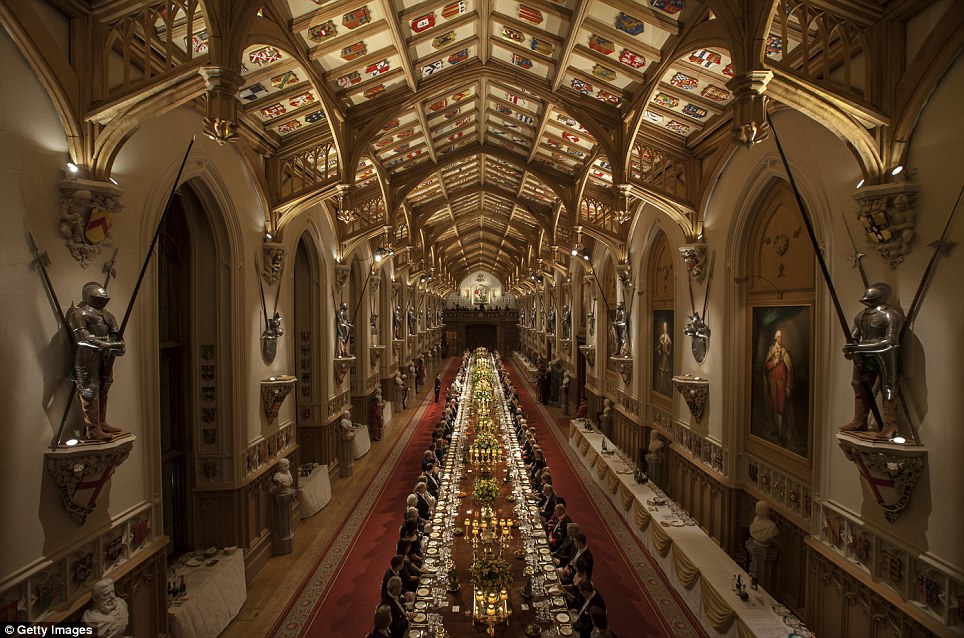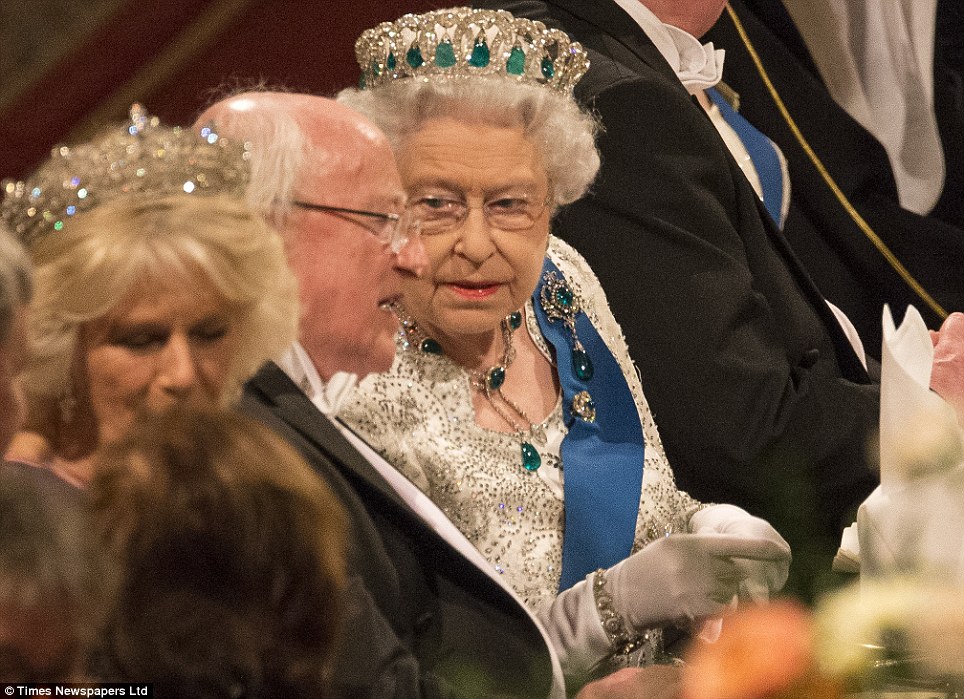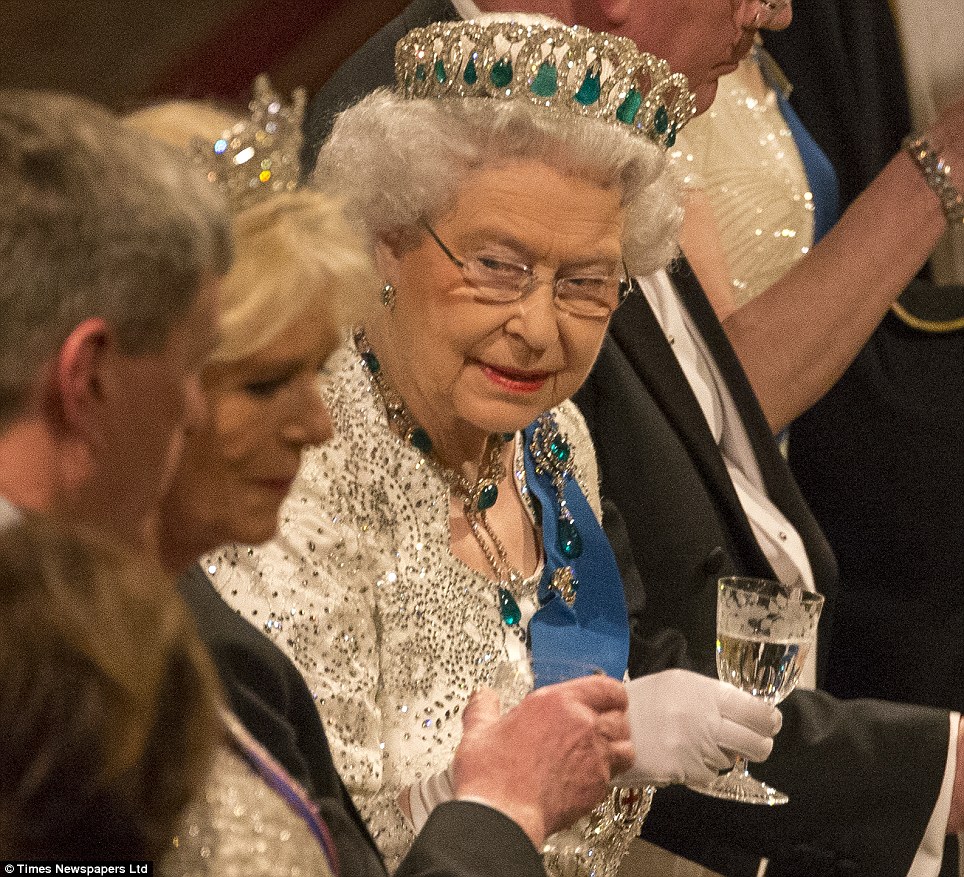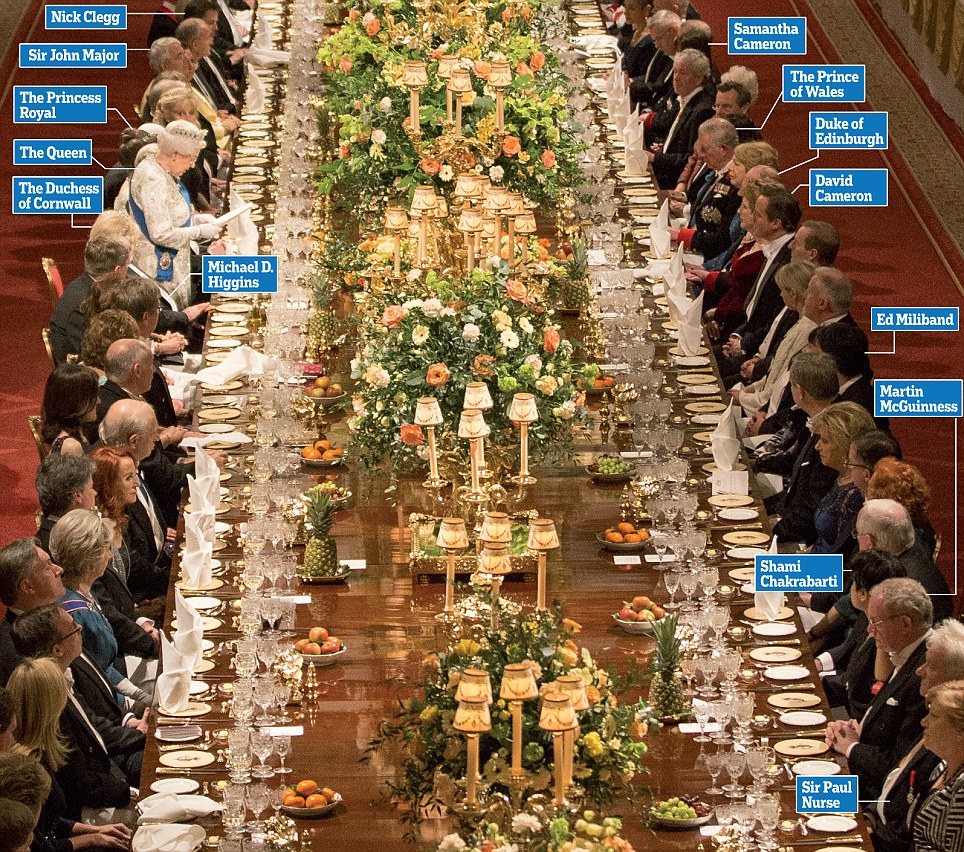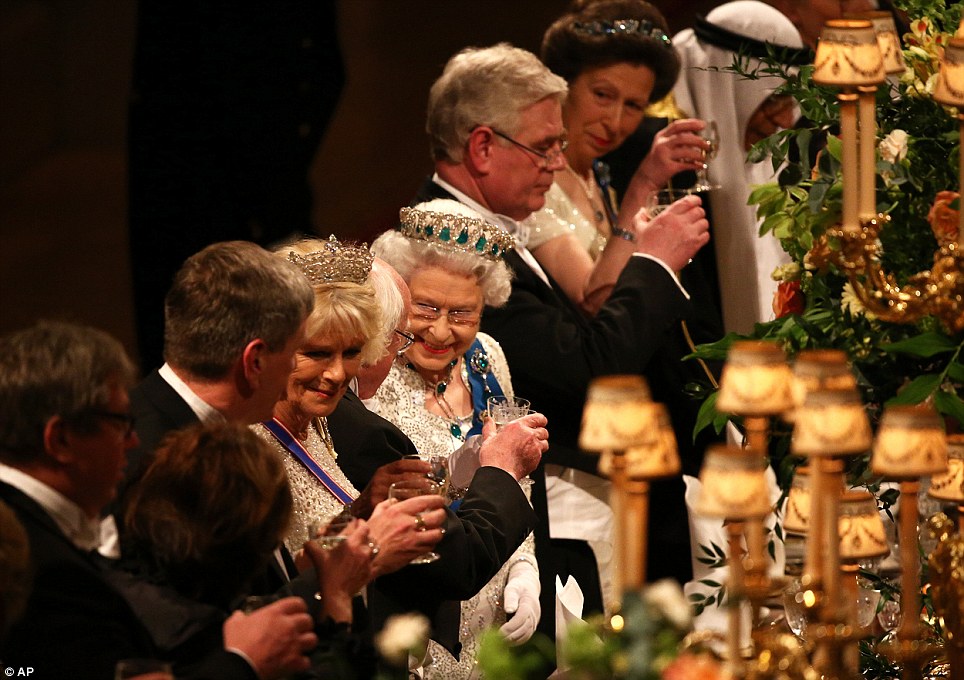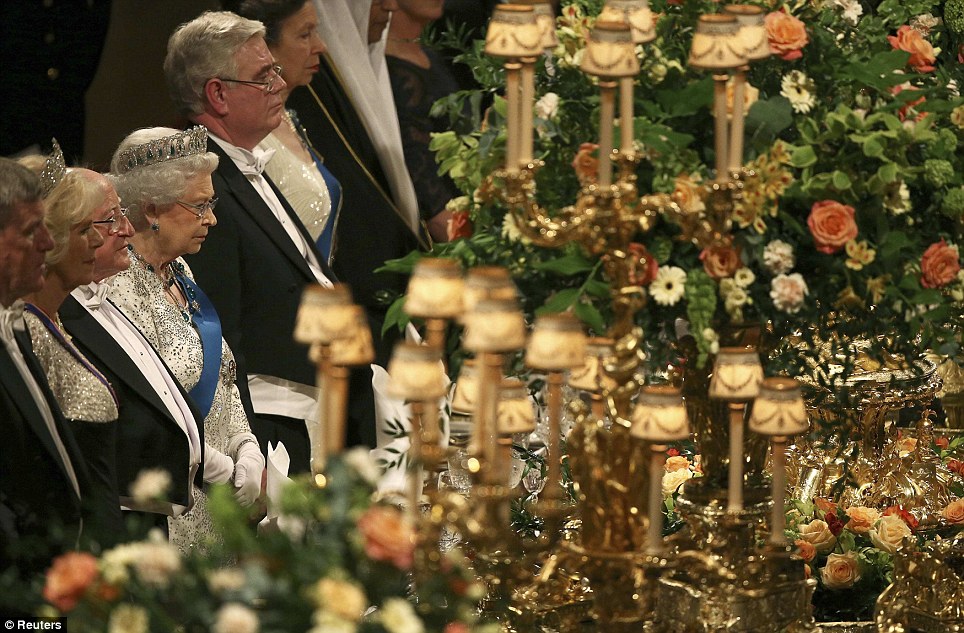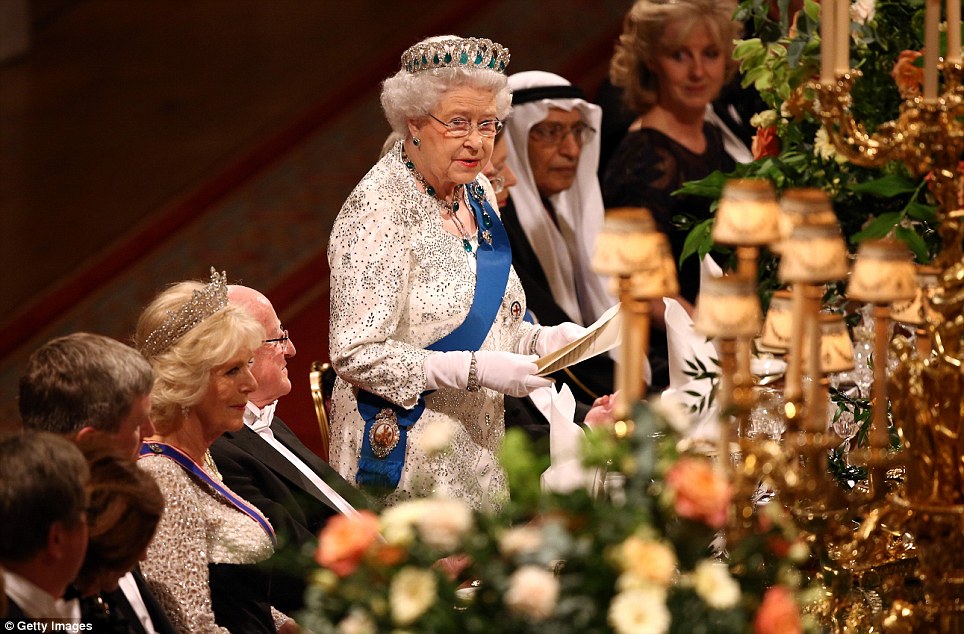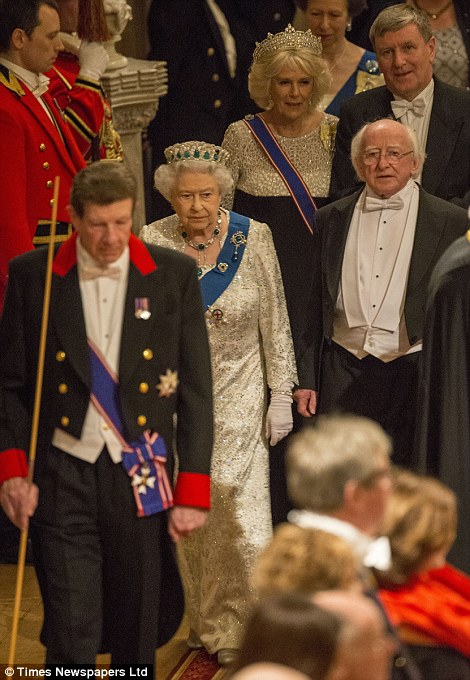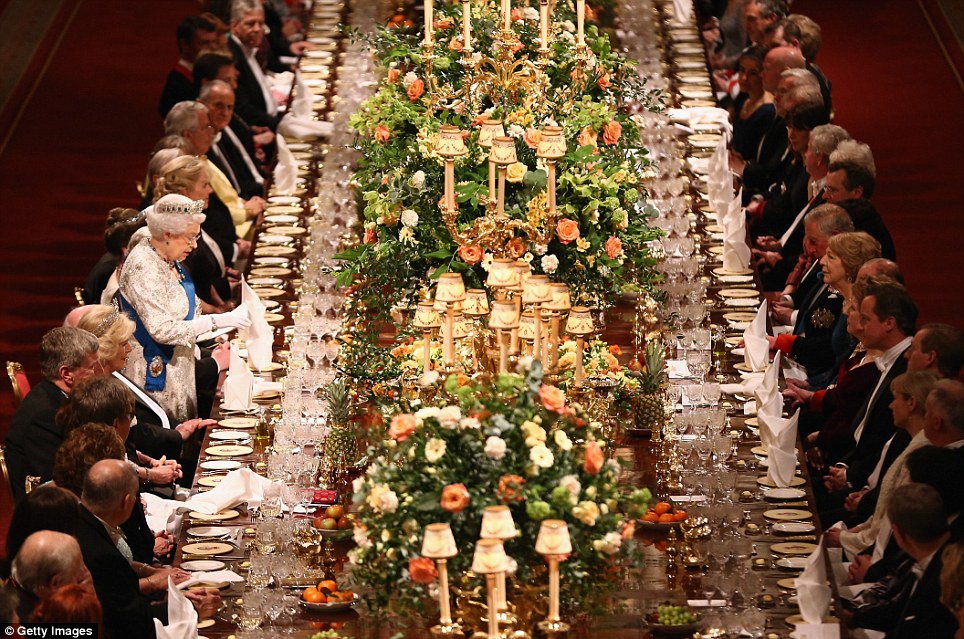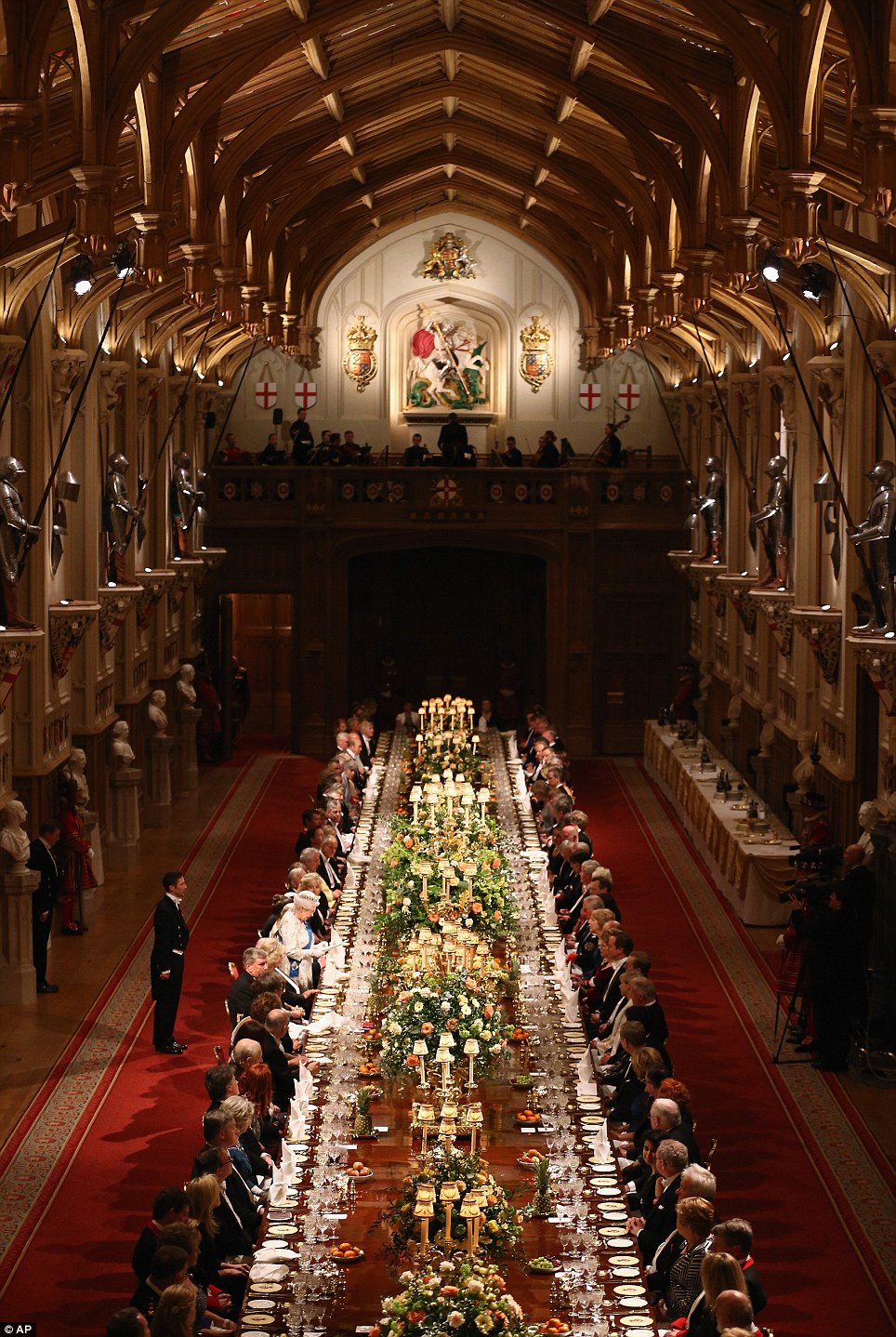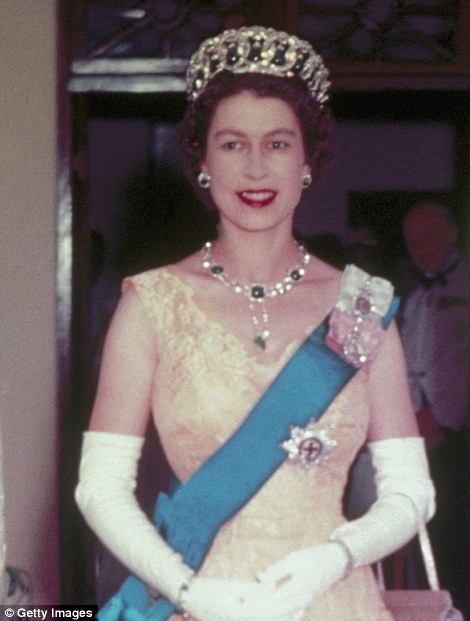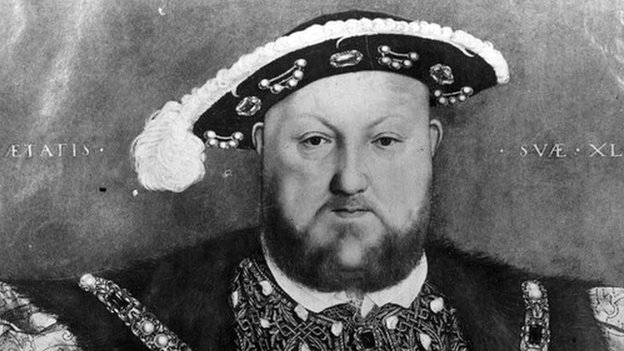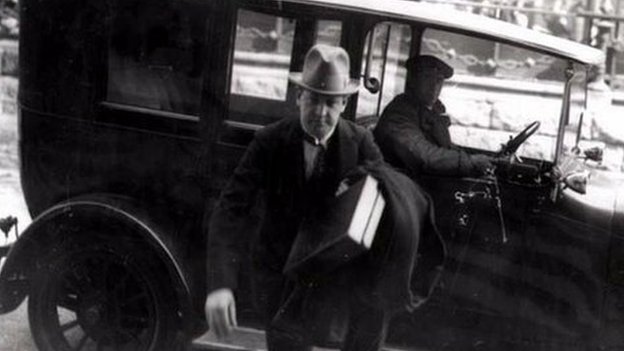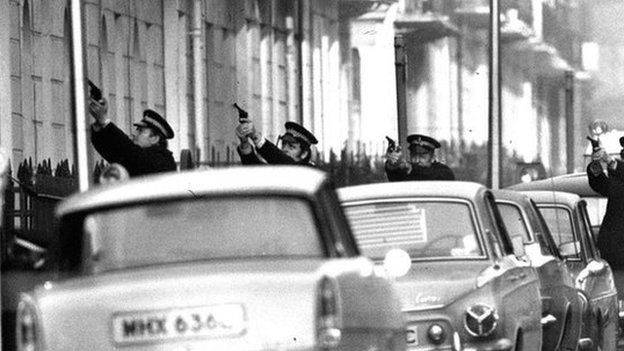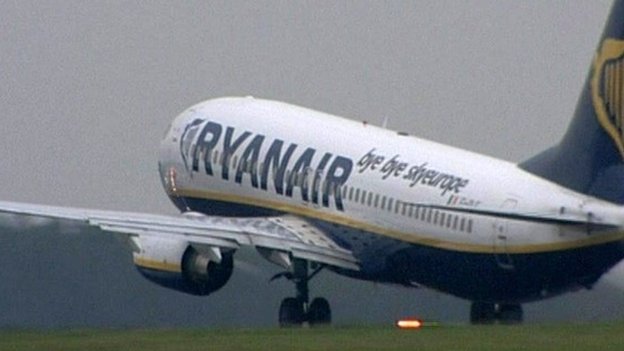The first ever state visit to the UK by an Irish head of state starts on Tuesday.
Michael D Higgins, the ninth president of what is now the Republic of Ireland since it seceded from the UK in 1922, will address both Houses of Parliament, another first for an Irish head of state.
Mr Higgins will be joined by his wife, Sabina, and Irish prime minister (Taoiseach) Enda Kenny.
The Queen will stage a traditional state banquet in honour of her guest at Windsor Castle. Mr Higgins and his wife will visit the Royal Shakespeare Company in Stratford-upon-Avon and he will attend another major dinner at the Guildhall in the City of London given by the Lord Mayor.
During the visit, the Queen - who made the first state visit by a British head of state to the Republic of Ireland in 2011 and was warmly welcomed - will host a reception for leading figures from Northern Ireland's cultural, political and business life.
Sinn Fein's Martin McGuinness, Northern Ireland's Deputy First Minister and a former IRA commander who refused to sit in the House of Commons - when he was an MP - because he would have had to swear an oath of allegiance to the monarch, will also attend the banquet with the Queen.
Irish Prime Minister Enda Kenny said the president's first UK state visit would mean "an enormous amount to the people of Ireland, but also to the people of Britain".
"Symbolically, it's of enormous importance, but also practically, in that it brings the relationship between the two countries and the two peoples to an unprecedented level.
"This was unthinkable 20 years ago," he told the BBC's Andrew Marr Show
"I don't see why he shouldn't attend, of course. This is all part of the building of relationships between the two countries and peoples on both sides of the divide.
"We've got to move on and not be blocked by the past," the Irish prime minister added.
The Troubles, which lasted from 1966 to 1998, left 3,530 people dead and over 47,500 injured.
Irish president's state visit 'takes relations to new level'
BBC News
26 March
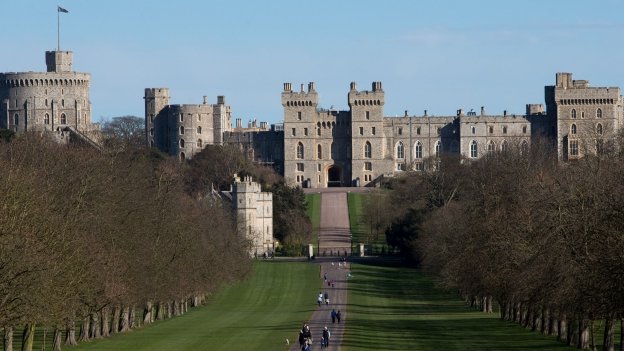
Irish president Michael D Higgins will start his state visit at Windsor Castle, in which he, his wife Sabina and Irish Taoiseach Enda Kenny will attend a traditional state banquet with the Queen. Also attending will be Northern Ireland's unionist First Minister Peter Robinson and its nationalist Deputy First Minister Martin McGuinness
An historic state visit to the UK by the Irish president will take relations between the two nations to a new level, the Foreign Office has said.
President Michael D Higgins will be joined by his wife, Sabina, and the Irish prime minister, Enda Kenny.
The visit, the first by an Irish head of state, will begin on 8 April.
The president will address both Houses of Parliament, another first for an Irish head of state.
The Queen will stage a traditional state banquet in honour of her guest at Windsor Castle. Mr Higgins and his wife will visit the Royal Shakespeare Company in Stratford-upon-Avon and he will attend another major dinner at the Guildhall in the City of London given by the Lord Mayor.
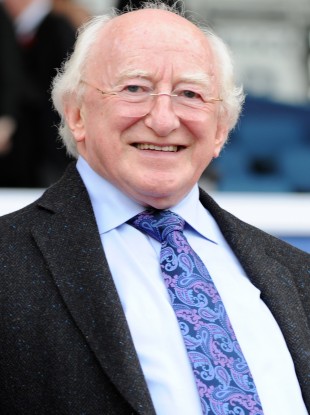
Irish President Michael D Higgins will start his state visit to the UK on Tuesday

Higgins will visit Stratford-upon-Avon, the birthplace of William Shakespeare
A Foreign Office spokesman said: "This is quite a special state visit.
"It follows on from the Queen and Duke of Edinburgh, who went in May 2011 to Ireland. It was one of those visits that properly deserves to be called an historic visit."
During the visit, the Queen will host a reception for leading figures from Northern Ireland's cultural, political and business life.
A Buckingham Palace spokesman said they recognised the special nature of the state visit.
"What we have is a genuine desire on behalf of the Queen to repay the kindness that was shown to her in Ireland," he said.
He added that the Queen had taken a strong interest in the planning for the trip.
"She is, and wants to be across the detail," he said.
BBC News - Irish president's state visit 'takes relations to new level'
Martin McGuinness to attend banquet with Queen when President Higgins visits UK
6 April 2014
BBC News
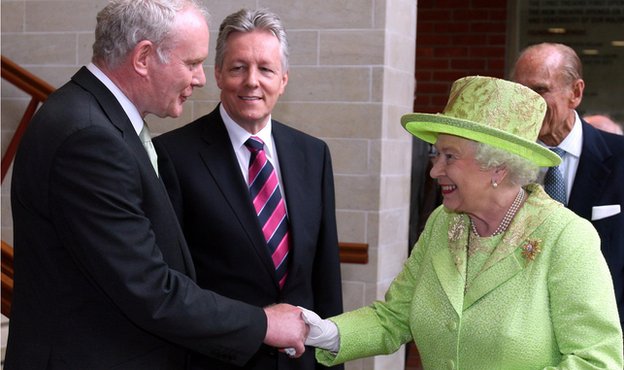
Extraordinary meeting: Sinn Féin's Martin McGuinness, a former IRA commander, shook hands with the Queen for the first time when she visited Belfast's Lyric Theatre in June 2012. The IRA murdered the Queen's cousin, Lord Mountbatten, when he was on holiday in the Republic of Ireland in 1979.
Martin McGuinness will attend a banquet hosted by the Queen during next week's state visit to Britain by Irish President Michael D Higgins.
Sinn Féin president Gerry Adams said the decision had to be viewed against the backdrop of huge political change in recent years.
President Higgins will be joined by his wife, Sabina, and the Irish prime minister, Enda Kenny.
The visit, the first by an Irish head of state, begins on 8 April.
'Unthinkable'
Martin McGuinness, who is Northern Ireland's deputy first minister and a former IRA commander, refused to sit in the House of Commons - when he was an MP - because he would have had to swear an oath of allegiance to the monarch.
He shook hands with the Queen, both in private and in public, during her visit to Northern Ireland in 2012.
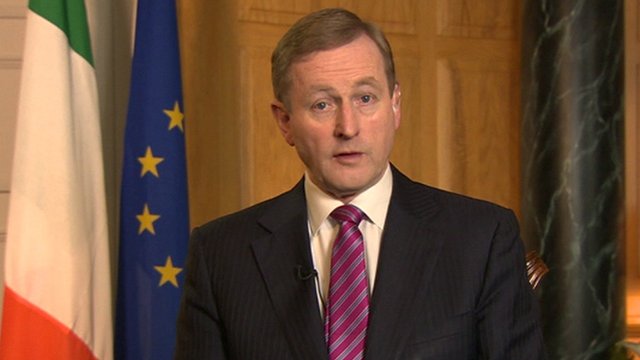
Enda Kenny: "It should be possible for members of the Royal Family to visit Dublin during the centenary commemoration ceremonies"
The handshake was regarded as a symbolic moment for the Northern Ireland peace process.
It was seen by many as one of the most significant of her reign as the IRA paramilitary group murdered the Queen's cousin, Lord Mountbatten, while he was on holiday in the Republic of Ireland in 1979.
The state banquet is to be staged at Windsor Castle, in honour of President Higgins.
During his UK visit, he will address both Houses of Parliament, another first for an Irish head of state.
Mr Higgins will also visit the Royal Shakespeare Company in Stratford-upon-Avon and attend another major dinner at the Guildhall in the City of London, given by the Lord Mayor.
During the visit, the Queen will host a reception for leading figures from Northern Ireland's cultural, political and business life.
Irish Prime Minister Enda Kenny said the president's first UK state visit would mean "an enormous amount to the people of Ireland, but also to the people of Britain".
"Symbolically, it's of enormous importance, but also practically, in that it brings the relationship between the two countries and the two peoples to an unprecedented level.
"This was unthinkable 20 years ago," he told the BBC's Andrew Marr Show.
'Move on'
Regarding the Sinn Féin representative's appearance at the Queen's state banquet, Mr Kenny said: "Martin McGuinness, as deputy first minister in the assembly in Northern Ireland has been very forthright and very pragmatic in what he has been doing here.
"I don't see why he shouldn't attend, of course. This is all part of the building of relationships between the two countries and peoples on both sides of the divide.
"We've got to move on and not be blocked by the past," the Irish prime minister added.
The visit by President Higgins follows on from the Queen's historic state visit to the Republic of Ireland in May 2011.
During her first ever trip to the Republic, the Queen laid wreaths in tribute to Irishmen who died fighting for Britain in both world wars and also for Irish rebels who died fighting for independence from British rule.
In a visit rich in symbolism, the monarch also spoke a few words in the Irish language as she addressed a state dinner in Dublin Castle, the building that had once been the seat of British rule in Ireland.
Analysis

Martina Purdy
BBC News NI Political Correspondent
As a youth, Martin McGuinness wore the uniform of an IRA volunteer - secretly, illegally and defiantly.
Now, decades later, he will don a white tie and tails and publicly, cheerfully and - perhaps -still defiantly, attend the Queen's banquet at Windsor Castle.
We should not be too surprised. His journey has already seen him shake the hand of the Queen.
Not to attend the first state visit of an Irish president would undermine all his promises, made as an Irish presidential candidate, that he would work for peace.
It will put him in the company of Ireland's most senior figure, Michael D Higgins, and the presidency is a post that Sinn Féin covets.
It will also win praise in Dublin and the Republic, helping to reverse the political blunder of Sinn Féin's refusal to attend the Queen's visit to the Irish presidential residence in 2011.
And whatever votes Sinn Féin loses in Northern Ireland, if any, will be offset by potential gains in the south of Ireland.
Having conquered Northern Ireland, it is to the south that Sinn Féin's hungry eyes look for growth.
This decision is good for Martin McGuinness, peace and for Sinn Féin.
BBC News - Martin McGuinness to attend banquet with Queen when President Higgins visits UK
Michael D Higgins, the ninth president of what is now the Republic of Ireland since it seceded from the UK in 1922, will address both Houses of Parliament, another first for an Irish head of state.
Mr Higgins will be joined by his wife, Sabina, and Irish prime minister (Taoiseach) Enda Kenny.
The Queen will stage a traditional state banquet in honour of her guest at Windsor Castle. Mr Higgins and his wife will visit the Royal Shakespeare Company in Stratford-upon-Avon and he will attend another major dinner at the Guildhall in the City of London given by the Lord Mayor.
During the visit, the Queen - who made the first state visit by a British head of state to the Republic of Ireland in 2011 and was warmly welcomed - will host a reception for leading figures from Northern Ireland's cultural, political and business life.
Sinn Fein's Martin McGuinness, Northern Ireland's Deputy First Minister and a former IRA commander who refused to sit in the House of Commons - when he was an MP - because he would have had to swear an oath of allegiance to the monarch, will also attend the banquet with the Queen.
Irish Prime Minister Enda Kenny said the president's first UK state visit would mean "an enormous amount to the people of Ireland, but also to the people of Britain".
"Symbolically, it's of enormous importance, but also practically, in that it brings the relationship between the two countries and the two peoples to an unprecedented level.
"This was unthinkable 20 years ago," he told the BBC's Andrew Marr Show
"I don't see why he shouldn't attend, of course. This is all part of the building of relationships between the two countries and peoples on both sides of the divide.
"We've got to move on and not be blocked by the past," the Irish prime minister added.
The Troubles, which lasted from 1966 to 1998, left 3,530 people dead and over 47,500 injured.
Irish president's state visit 'takes relations to new level'
BBC News
26 March

Irish president Michael D Higgins will start his state visit at Windsor Castle, in which he, his wife Sabina and Irish Taoiseach Enda Kenny will attend a traditional state banquet with the Queen. Also attending will be Northern Ireland's unionist First Minister Peter Robinson and its nationalist Deputy First Minister Martin McGuinness
An historic state visit to the UK by the Irish president will take relations between the two nations to a new level, the Foreign Office has said.
President Michael D Higgins will be joined by his wife, Sabina, and the Irish prime minister, Enda Kenny.
The visit, the first by an Irish head of state, will begin on 8 April.
The president will address both Houses of Parliament, another first for an Irish head of state.
The Queen will stage a traditional state banquet in honour of her guest at Windsor Castle. Mr Higgins and his wife will visit the Royal Shakespeare Company in Stratford-upon-Avon and he will attend another major dinner at the Guildhall in the City of London given by the Lord Mayor.

Irish President Michael D Higgins will start his state visit to the UK on Tuesday

Higgins will visit Stratford-upon-Avon, the birthplace of William Shakespeare
A Foreign Office spokesman said: "This is quite a special state visit.
"It follows on from the Queen and Duke of Edinburgh, who went in May 2011 to Ireland. It was one of those visits that properly deserves to be called an historic visit."
During the visit, the Queen will host a reception for leading figures from Northern Ireland's cultural, political and business life.
A Buckingham Palace spokesman said they recognised the special nature of the state visit.
"What we have is a genuine desire on behalf of the Queen to repay the kindness that was shown to her in Ireland," he said.
He added that the Queen had taken a strong interest in the planning for the trip.
"She is, and wants to be across the detail," he said.
BBC News - Irish president's state visit 'takes relations to new level'
Martin McGuinness to attend banquet with Queen when President Higgins visits UK
6 April 2014
BBC News

Extraordinary meeting: Sinn Féin's Martin McGuinness, a former IRA commander, shook hands with the Queen for the first time when she visited Belfast's Lyric Theatre in June 2012. The IRA murdered the Queen's cousin, Lord Mountbatten, when he was on holiday in the Republic of Ireland in 1979.
Martin McGuinness will attend a banquet hosted by the Queen during next week's state visit to Britain by Irish President Michael D Higgins.
Sinn Féin president Gerry Adams said the decision had to be viewed against the backdrop of huge political change in recent years.
President Higgins will be joined by his wife, Sabina, and the Irish prime minister, Enda Kenny.
The visit, the first by an Irish head of state, begins on 8 April.
'Unthinkable'
Martin McGuinness, who is Northern Ireland's deputy first minister and a former IRA commander, refused to sit in the House of Commons - when he was an MP - because he would have had to swear an oath of allegiance to the monarch.
He shook hands with the Queen, both in private and in public, during her visit to Northern Ireland in 2012.

Enda Kenny: "It should be possible for members of the Royal Family to visit Dublin during the centenary commemoration ceremonies"
The handshake was regarded as a symbolic moment for the Northern Ireland peace process.
It was seen by many as one of the most significant of her reign as the IRA paramilitary group murdered the Queen's cousin, Lord Mountbatten, while he was on holiday in the Republic of Ireland in 1979.
The state banquet is to be staged at Windsor Castle, in honour of President Higgins.
During his UK visit, he will address both Houses of Parliament, another first for an Irish head of state.
Mr Higgins will also visit the Royal Shakespeare Company in Stratford-upon-Avon and attend another major dinner at the Guildhall in the City of London, given by the Lord Mayor.
During the visit, the Queen will host a reception for leading figures from Northern Ireland's cultural, political and business life.
Irish Prime Minister Enda Kenny said the president's first UK state visit would mean "an enormous amount to the people of Ireland, but also to the people of Britain".
"Symbolically, it's of enormous importance, but also practically, in that it brings the relationship between the two countries and the two peoples to an unprecedented level.
"This was unthinkable 20 years ago," he told the BBC's Andrew Marr Show.
'Move on'
Regarding the Sinn Féin representative's appearance at the Queen's state banquet, Mr Kenny said: "Martin McGuinness, as deputy first minister in the assembly in Northern Ireland has been very forthright and very pragmatic in what he has been doing here.
"I don't see why he shouldn't attend, of course. This is all part of the building of relationships between the two countries and peoples on both sides of the divide.
"We've got to move on and not be blocked by the past," the Irish prime minister added.
The visit by President Higgins follows on from the Queen's historic state visit to the Republic of Ireland in May 2011.
During her first ever trip to the Republic, the Queen laid wreaths in tribute to Irishmen who died fighting for Britain in both world wars and also for Irish rebels who died fighting for independence from British rule.
In a visit rich in symbolism, the monarch also spoke a few words in the Irish language as she addressed a state dinner in Dublin Castle, the building that had once been the seat of British rule in Ireland.
Analysis

Martina Purdy
BBC News NI Political Correspondent
As a youth, Martin McGuinness wore the uniform of an IRA volunteer - secretly, illegally and defiantly.
Now, decades later, he will don a white tie and tails and publicly, cheerfully and - perhaps -still defiantly, attend the Queen's banquet at Windsor Castle.
We should not be too surprised. His journey has already seen him shake the hand of the Queen.
Not to attend the first state visit of an Irish president would undermine all his promises, made as an Irish presidential candidate, that he would work for peace.
It will put him in the company of Ireland's most senior figure, Michael D Higgins, and the presidency is a post that Sinn Féin covets.
It will also win praise in Dublin and the Republic, helping to reverse the political blunder of Sinn Féin's refusal to attend the Queen's visit to the Irish presidential residence in 2011.
And whatever votes Sinn Féin loses in Northern Ireland, if any, will be offset by potential gains in the south of Ireland.
Having conquered Northern Ireland, it is to the south that Sinn Féin's hungry eyes look for growth.
This decision is good for Martin McGuinness, peace and for Sinn Féin.
BBC News - Martin McGuinness to attend banquet with Queen when President Higgins visits UK
Last edited:
